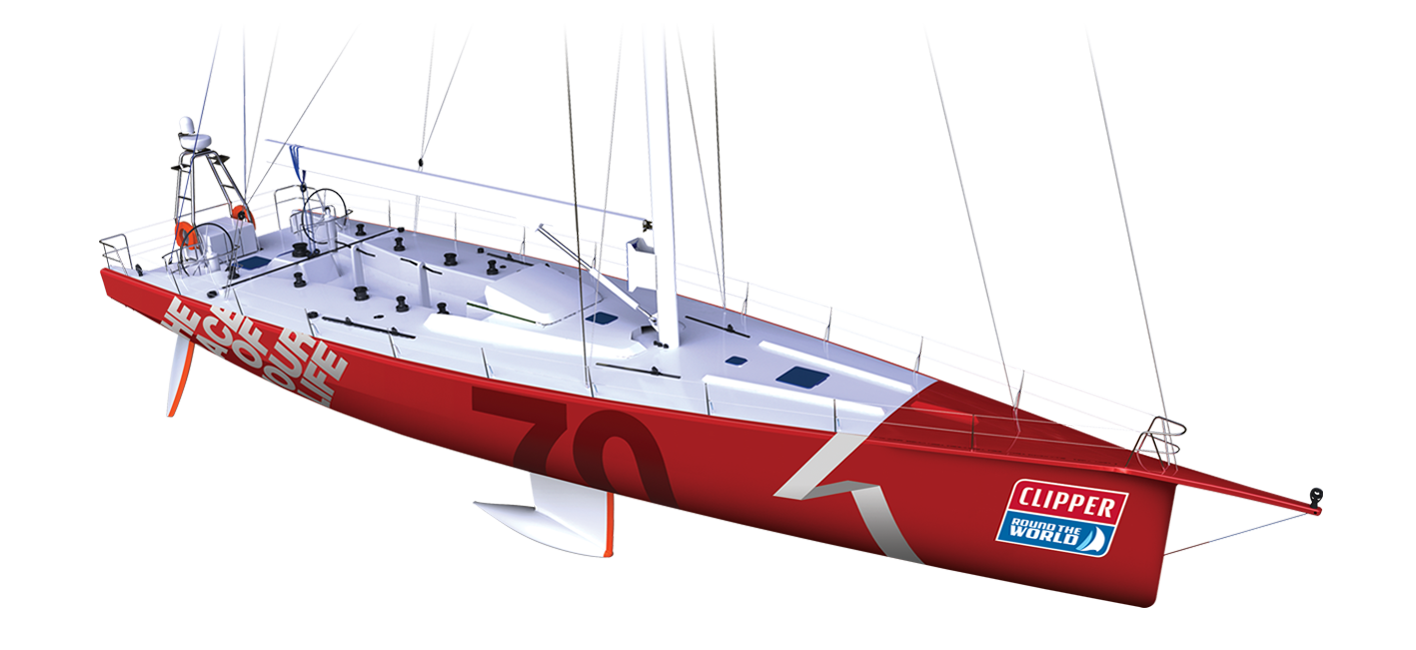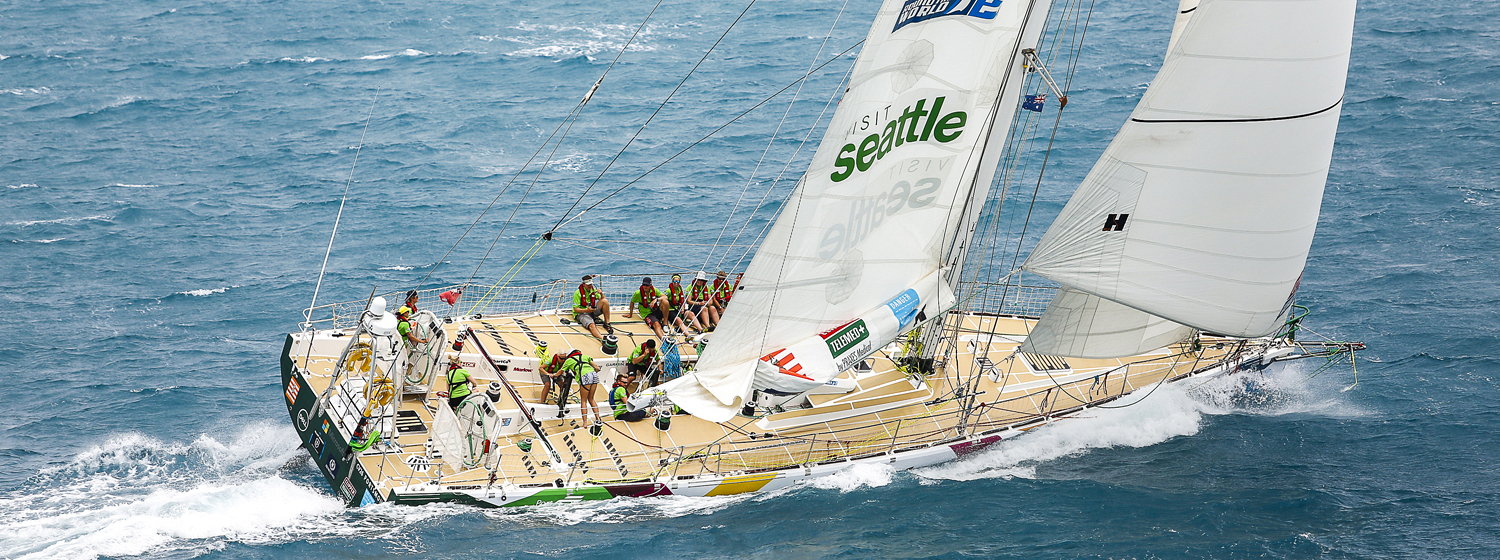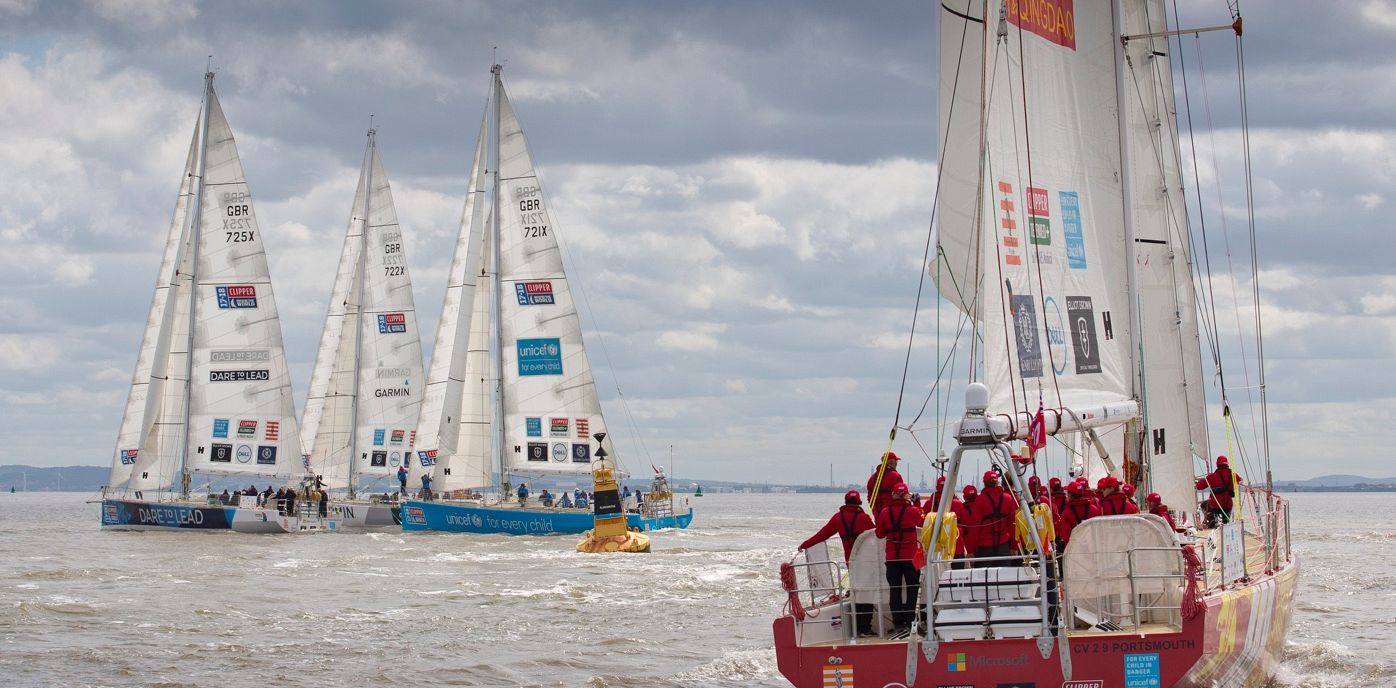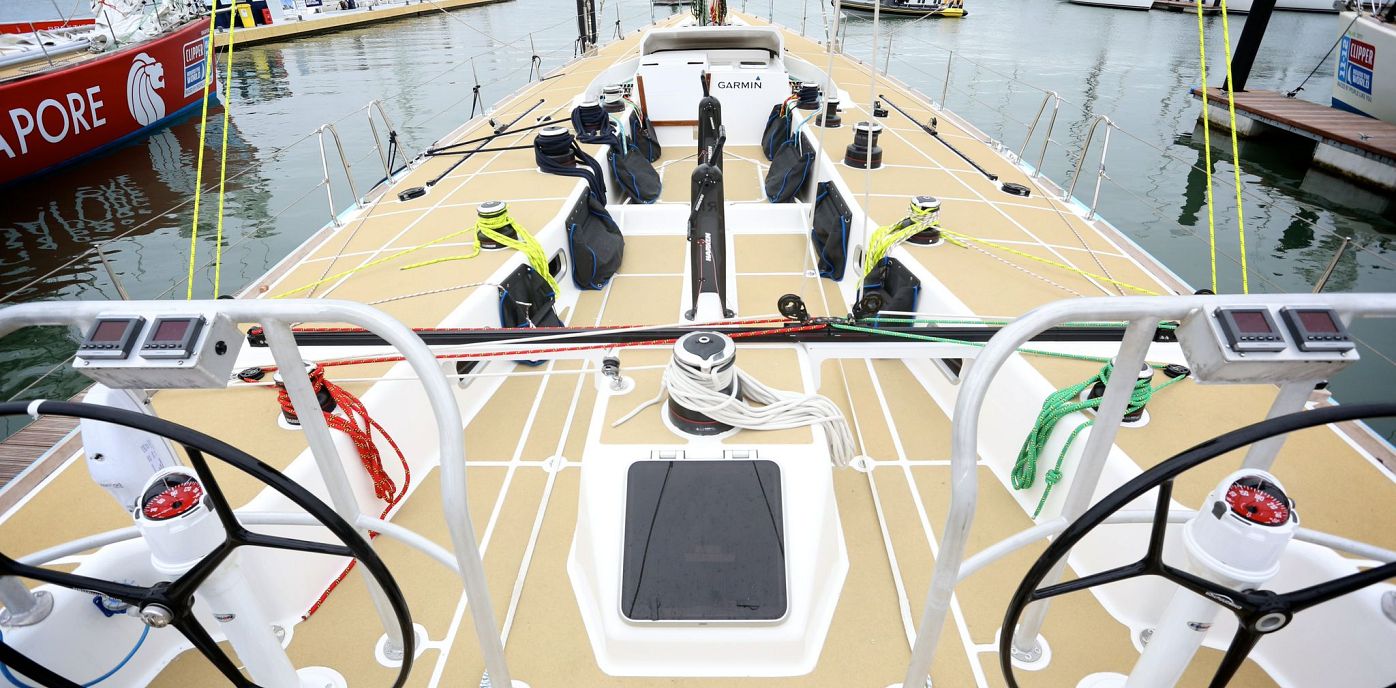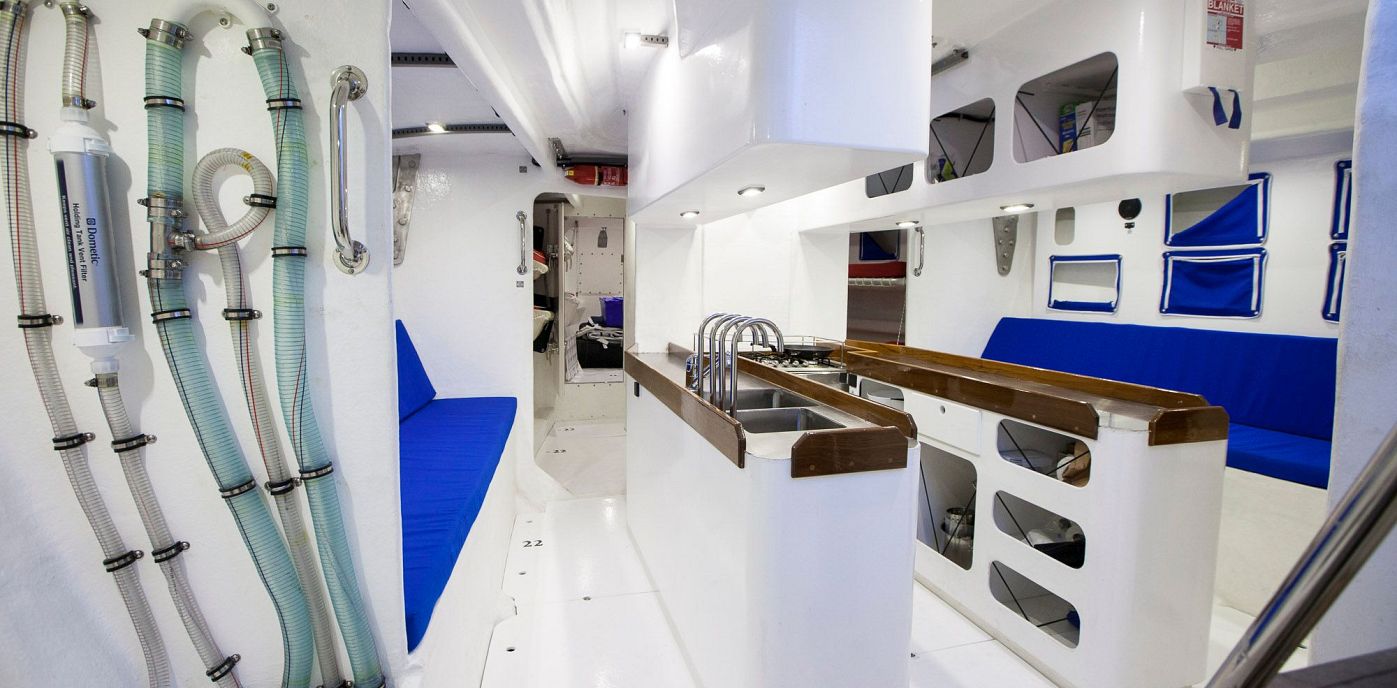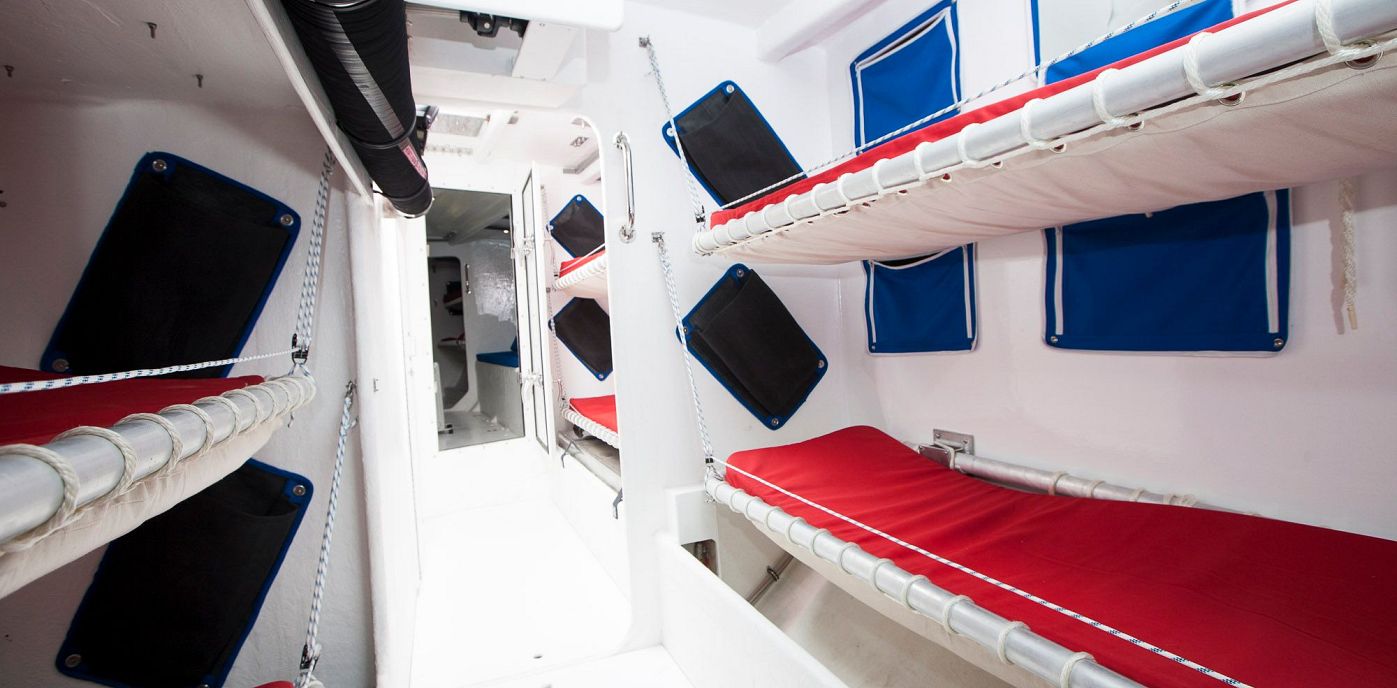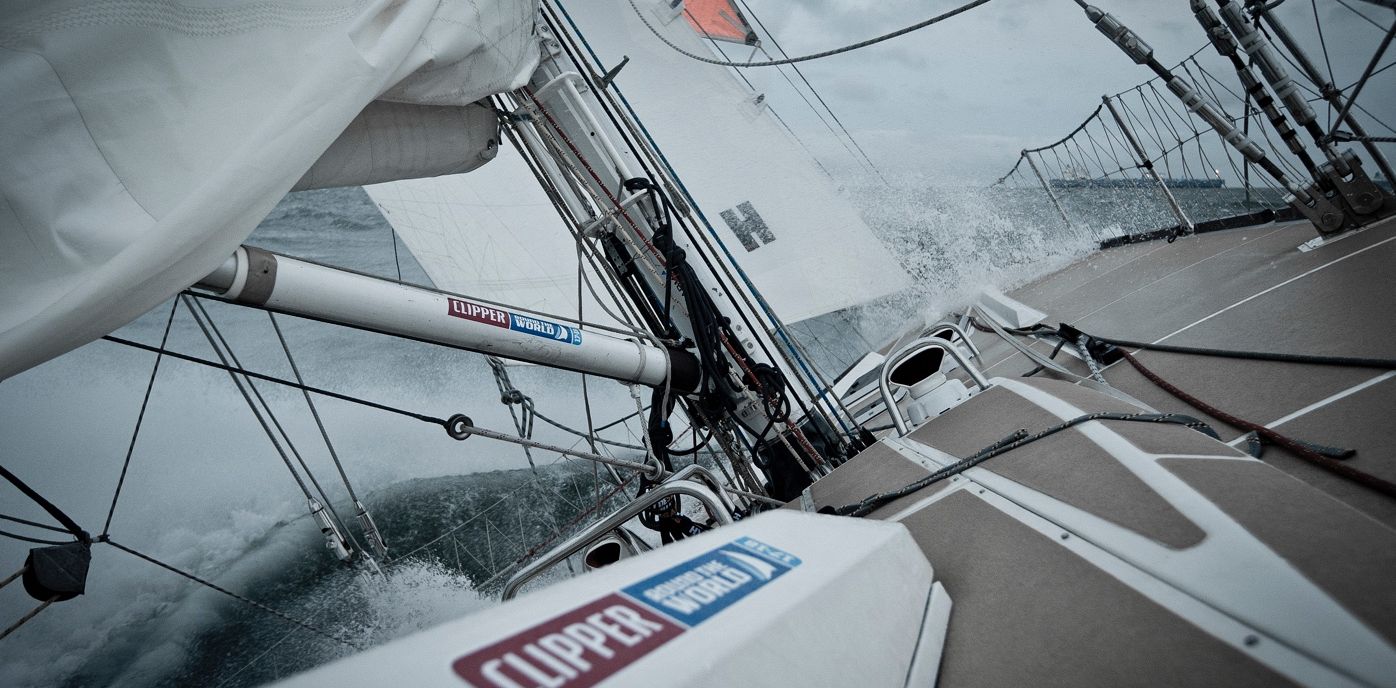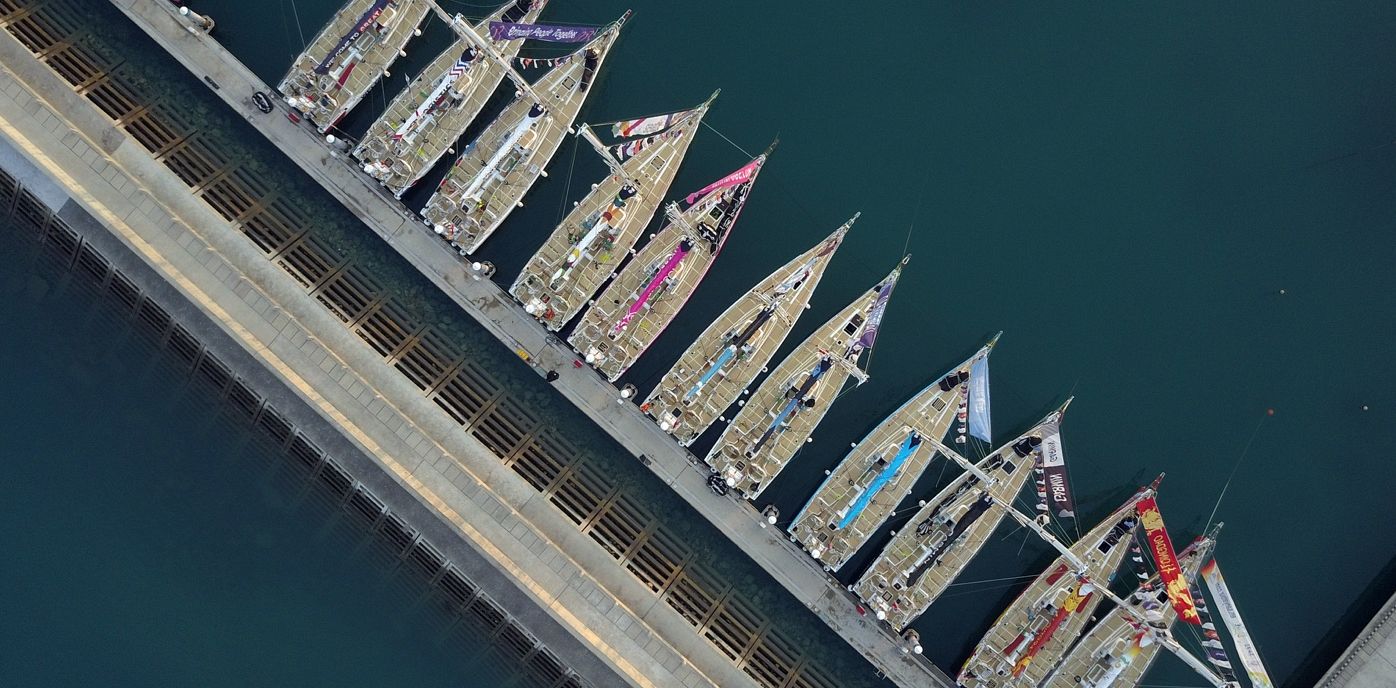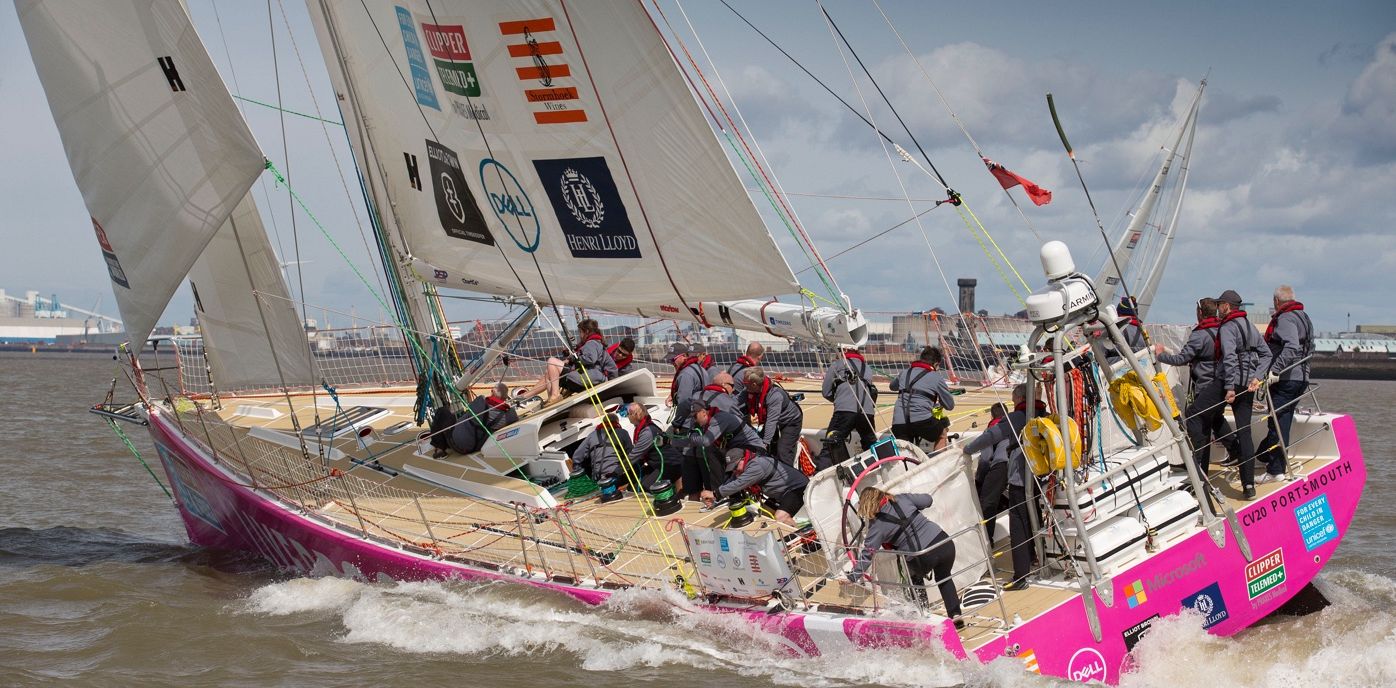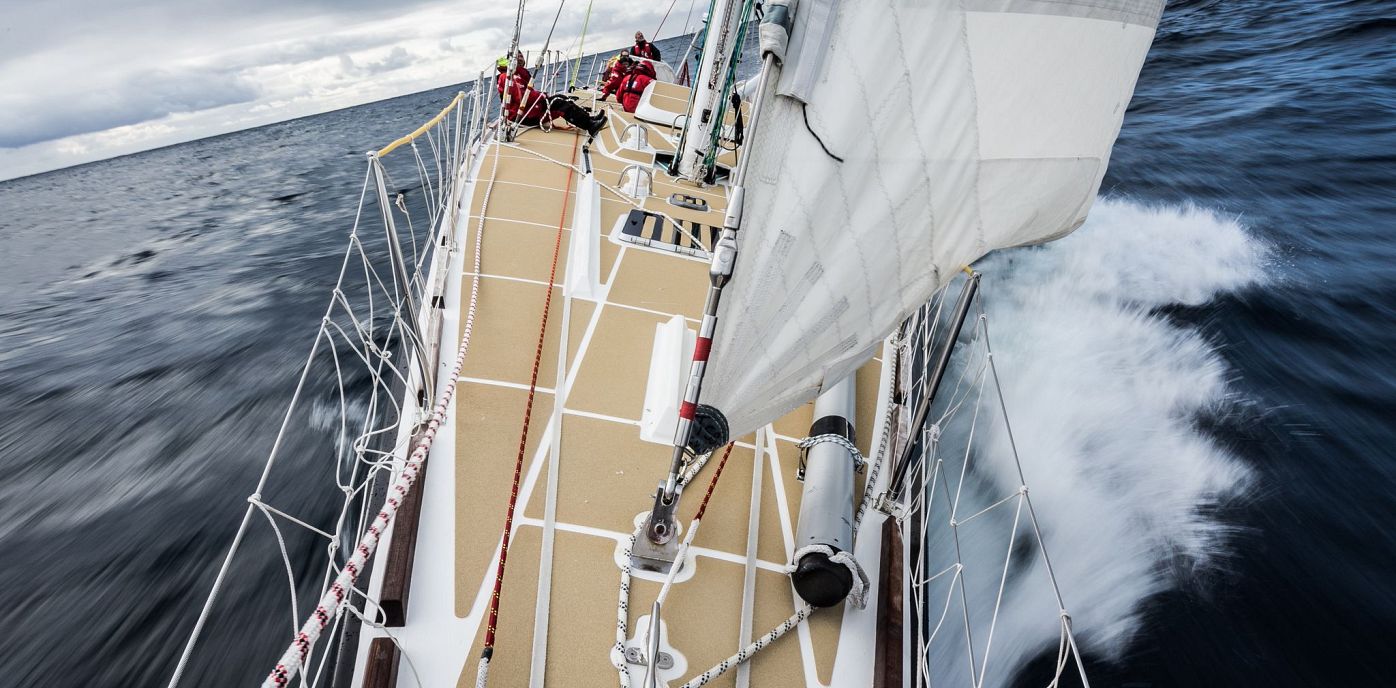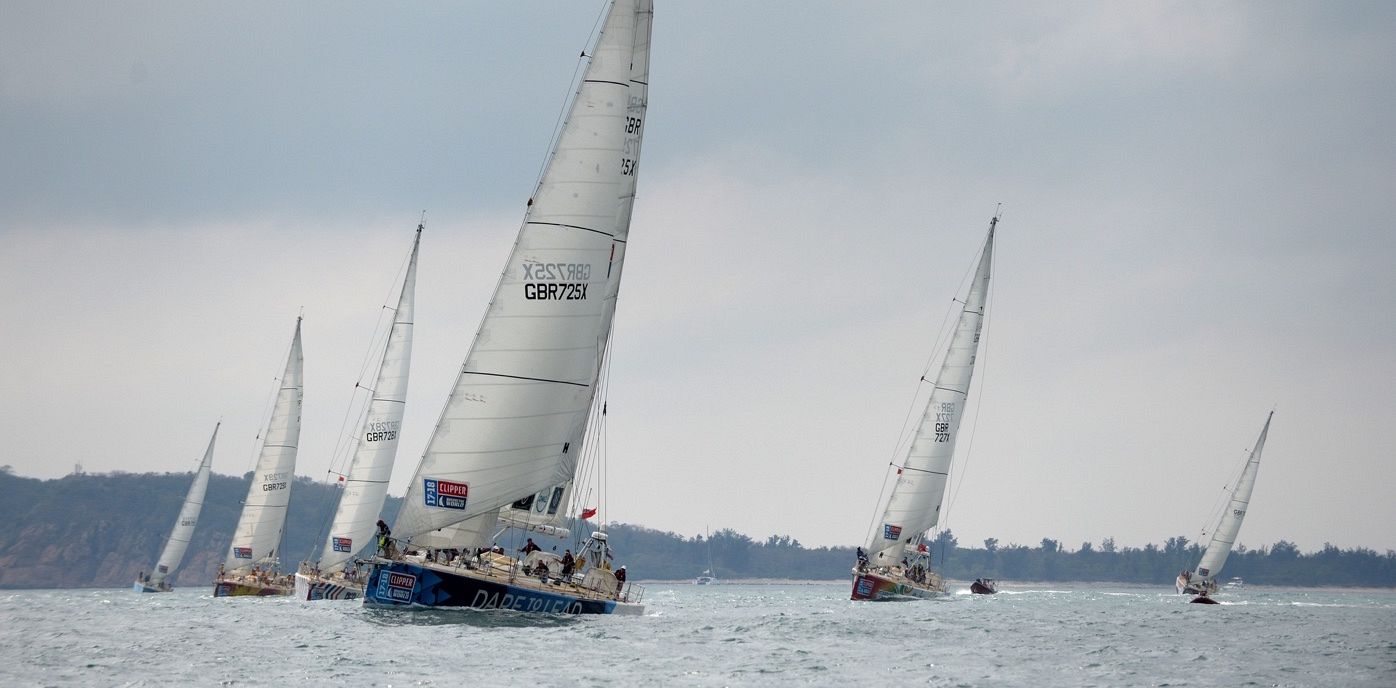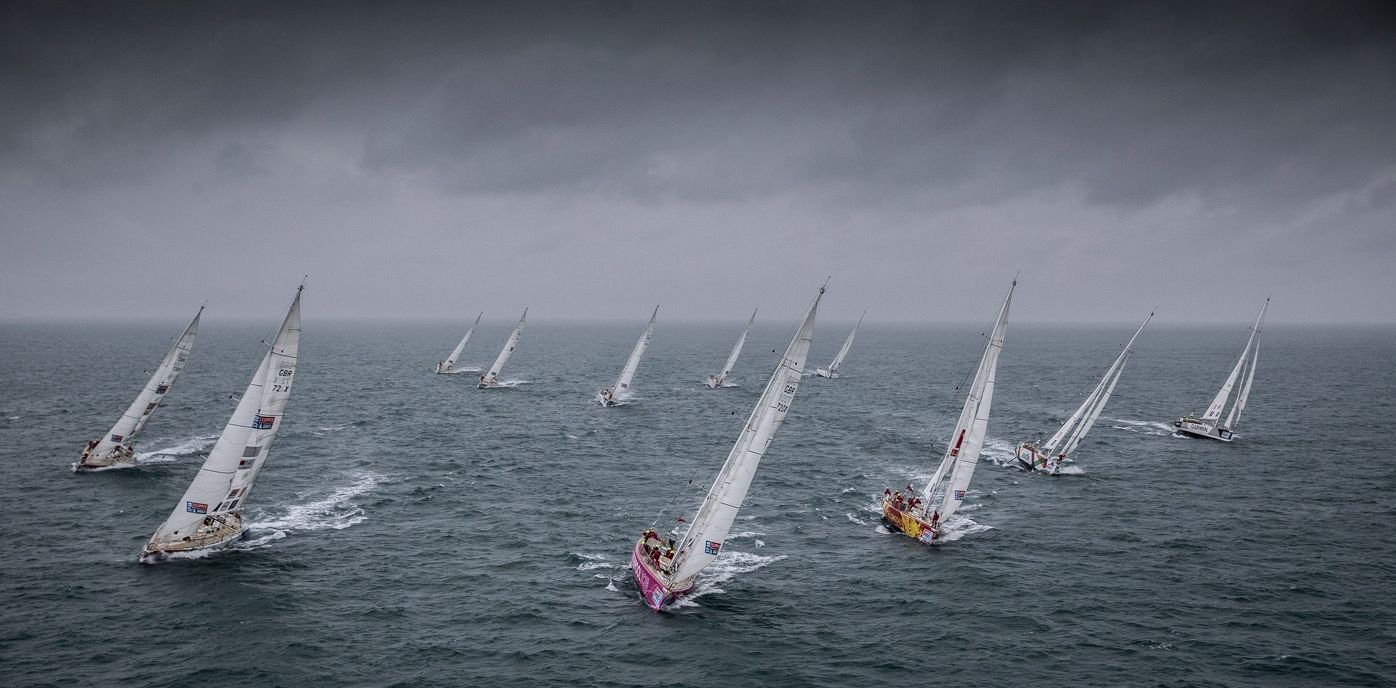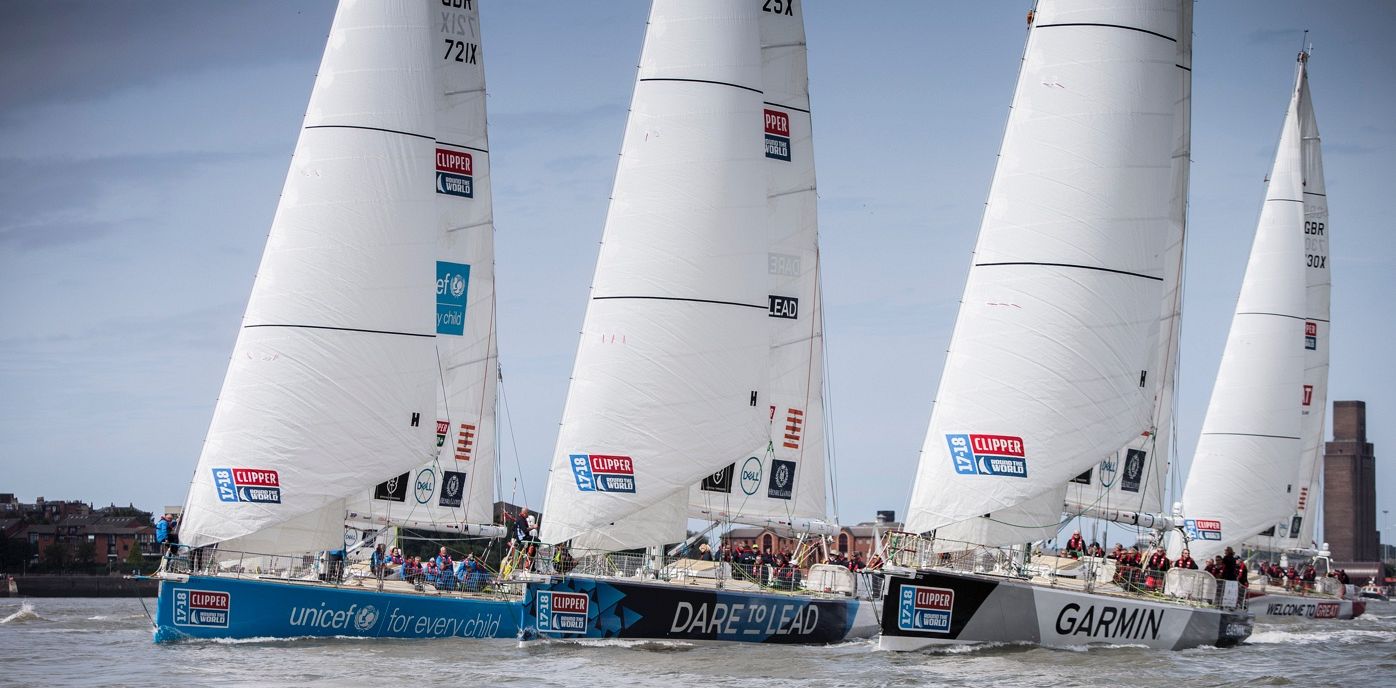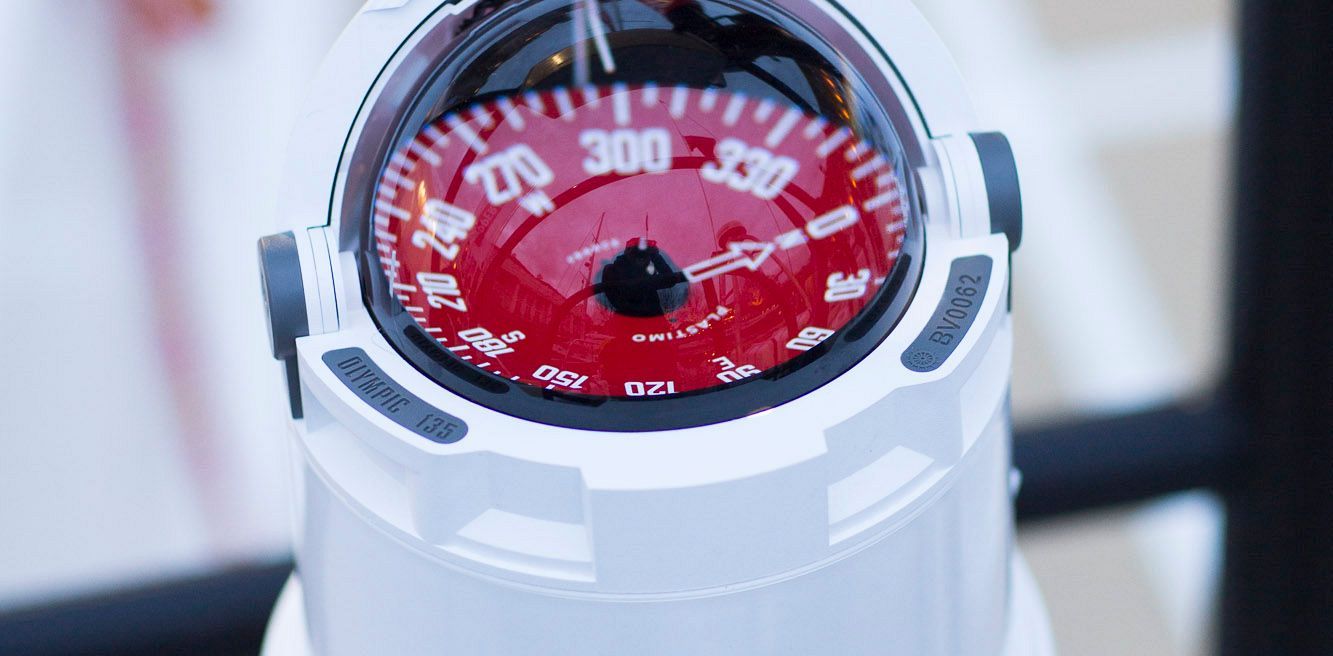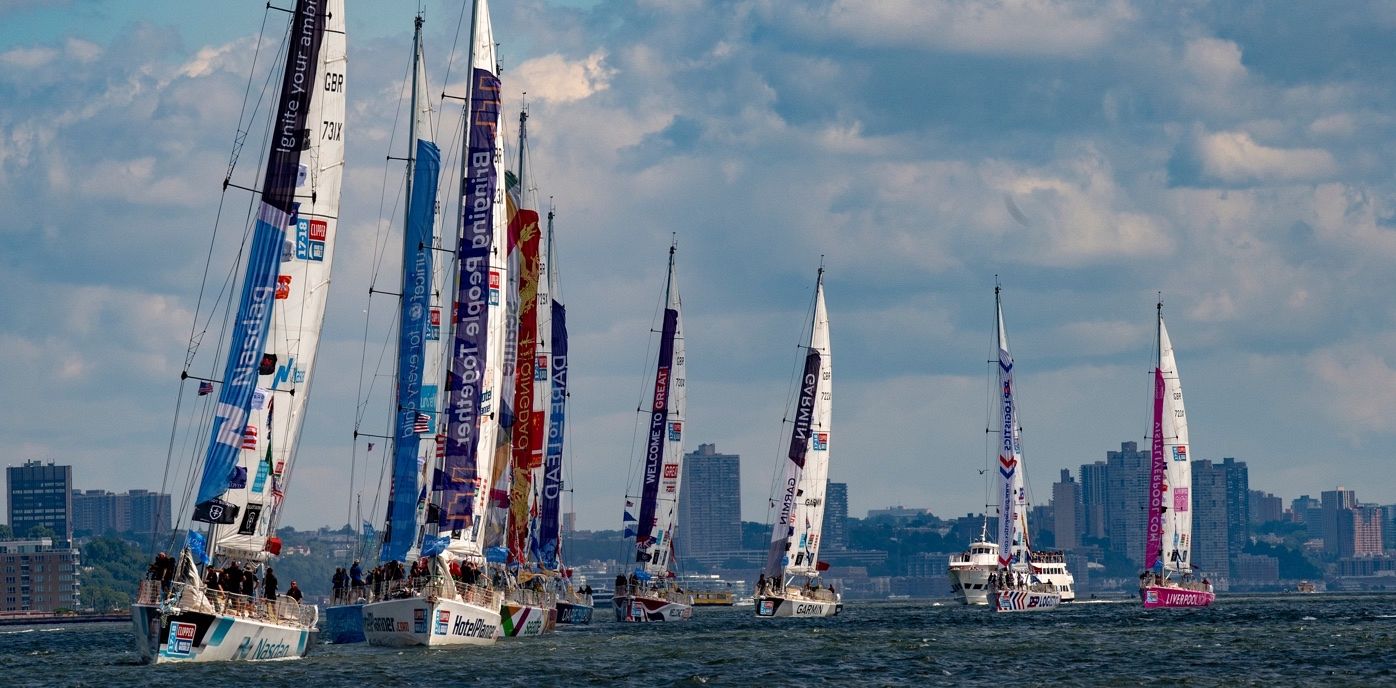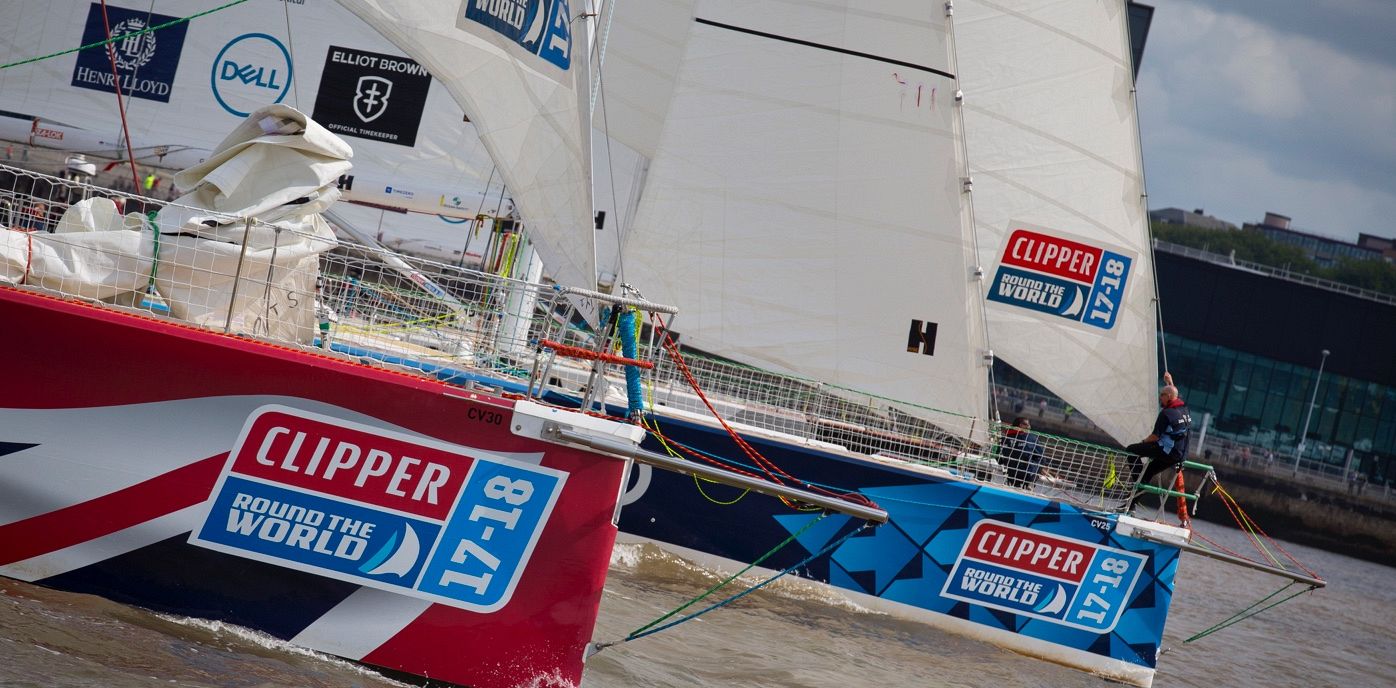The Fleet
The Clipper 70
The third generation of one-design Clipper Race yachts debuted in the Clipper 2013-14 Race, proving to be faster and more dynamic than previous Clipper Race yachts, breaking speed records of 35 knots [OneDLL, Leg 6].
The eleven 70-foot yachts make up world’s largest matched fleet of ocean racing yachts. Designed by renowned naval architect Tony Castro, they are the shining jewel in the Clipper Race crown, perfectly adapted to this gruelling sailing challenge.
As with all lean, mean ocean racing yachts, the Clipper 70s are not for the faint-hearted. They are by design stripped of all luxuries. Race Crew must become experts at living in a confined space, managing all their kit and belongings as they settle into their new home.
The Clipper 70s feature twin helms, twin rudders, and a six-foot bowsprit, which allows the inclusion of three large asymmetric spinnakers and a suite of Yankee headsails, which combine to increase performance and boat speed. The new hull design produces better performance and control, especially in the light winds encountered near the Equator or between weather systems when crossing oceans. The design provides total control in the heaviest of conditions, ensuring not only high speeds, but safety too.
Today’s fleet is in stark comparison to the one which began the very first Clipper Round the World Yacht Race in 1996. Development ideas have been taken from both previous yacht designs: the Clipper 60s and Clipper 68s.
Hull & Exterior
Hull
The hull construction utilises lessons learnt from previous races, employing well-proven composite construction materials and methods. The hull and deck are of a sandwich construction using glass fibre, epoxy resins and structural foam. More commonly called Foam Reinforced Plastic (FRP), this construction method is light, stiff and proven to produce an incredibly strong and safe hull. Modern features have been included within the design of the hull which, along with the twin rudders, give improved directional stability when heeling, provide the helm with more control and achieve a faster ride.
Deck
The deck layout provides a well-designed environment for the crew to perform in. Eleven Harken winches, including the primaries controlled by twin three-speed coffee grinders, will swiftly bring the sails under control. Jammers and organisers have been located in easy-to-operate locations allowing crew to swiftly change settings. The mainsheet has been placed further aft in the cockpit, permitting a better level of communication between the crew as they undertake the various evolutions during tacks, gybes, hoists and drops. The aluminum mast towers 95-feet above the waterline and is rigged using tried and trusted materials and methods to further improve overall safety.
Media
The boats are designed with a state-of-the-art HD fixed camera system to ensure that all the action on deck will be captured and used by media around the world to showcase the conditions faced by the crew during the race.
Interior Design
Below deck is a stripped-out interior with 24 bunks, a state-of-the-art navigation station and a simple galley. Watertight bulkheads and doors are strategically located to provide compartmentalisation in case of flooding.
The navigation station is placed towards the stern, providing a closer link between the navigator and helmsman. It is equipped with all the latest navigation electronics, navigation computers and cutting-edge satellite communications. This area of the yacht will provide the skipper and media crew member on board an ideal working space. GRIB weather files will be studied and courses mapped on the navigation computer while photos, diaries and videos will be edited and sent back to race headquarters using a powerful marine computer.
The engine and generator are mounted behind the companionway steps. Their mid-ship position brings increased stability and balance to the hull and also keeps all the ancillaries and electrical components in one maintenance-friendly area.
Centrally, just aft of the mast, sits a simple horseshoe-shaped galley, which feeds in to the communal area. This is where crew briefings and all-important meal times can take place. Crew accommodation runs from the stern forwards in a series of double bunks and stops short of a watertight bulkhead towards the front third of the boat. Ahead of this is a large compartment for storing sails, with the main hatch located directly above.
Bigger, Better, Faster
